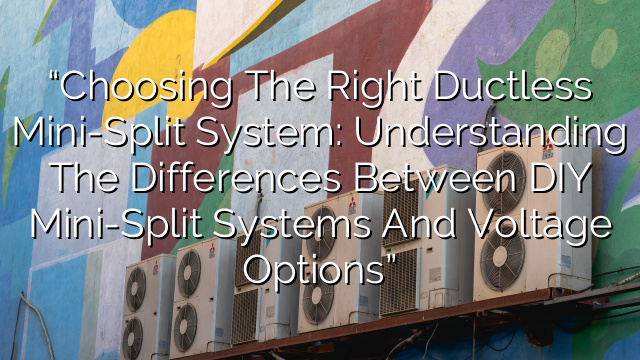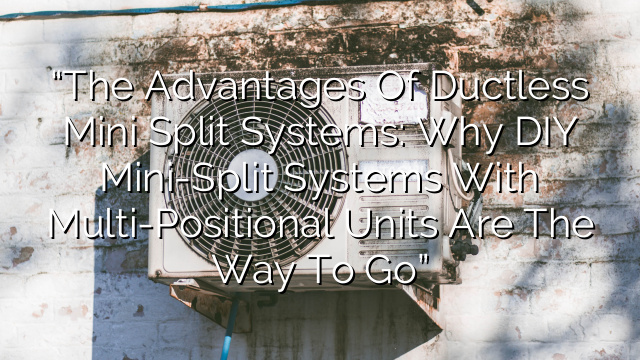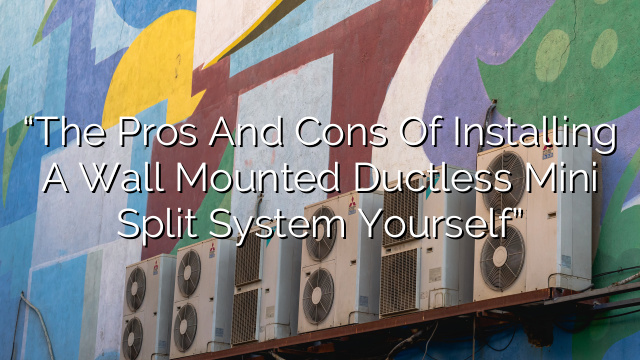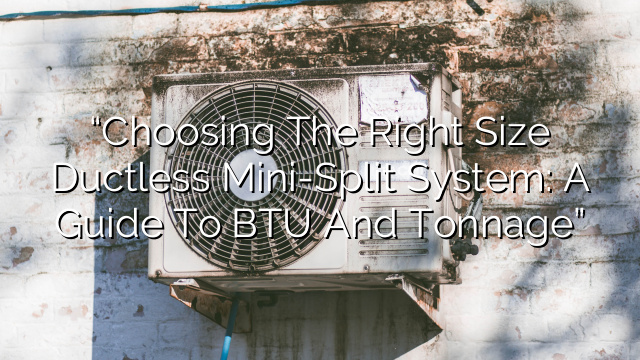Introduction
When it comes to heating and cooling your home, a ductless mini-split system is an excellent option to consider. These systems are energy-efficient, easy to install, and provide zoned heating and cooling for ultimate comfort. However, choosing the right ductless mini-split system can be overwhelming, especially with the wide array of choices available. In this article, we will discuss two important factors to consider when selecting a ductless mini-split system: DIY installation and voltage options.
DIY Mini-Split Systems
A DIY mini-split system is designed to be installed by homeowners themselves, without the need for professional help. This can help save on installation costs, as hiring a professional can be expensive. DIY mini-split systems come with detailed installation instructions and can be easily installed using basic tools and equipment. However, it is important to note that DIY installation requires basic knowledge of electrical wiring and HVAC systems. If you are not comfortable working with electricity or if you have limited knowledge of HVAC systems, it is best to hire a professional for installation.
There are several advantages to choosing a DIY mini-split system. First, it allows you to have full control over the installation process, ensuring that the system is installed exactly as you want it. Second, it can save you money on installation costs. Lastly, DIY mini-split systems are often more readily available and can be purchased from a variety of retailers.
Voltage Options
Mini-split systems are available in two different voltage options: 115 volts and 230 volts. The voltage rating indicates the amount of electrical power needed to operate the system. This is an important consideration when choosing a ductless mini-split system, as it determines the compatibility of the system with your home’s electrical system.
The most common voltage option for residential households is 230 volts. This option provides more power and is suitable for larger homes or spaces that require greater cooling or heating capacity. On the other hand, 115 volts is a lower voltage option that is typically used in smaller homes or spaces that require less cooling or heating capacity. It is important to check your home’s electrical system to determine whether it can accommodate a 230-volt system or if a 115-volt system is required.
Choosing the Right Ductless Mini-Split System
Choosing the right ductless mini-split system involves considering both DIY installation and voltage options. If you are comfortable with DIY installation and have the necessary knowledge and skills, a DIY mini-split system can be a cost-effective and convenient option. However, if you are unsure about DIY installation or if your home’s electrical system cannot accommodate a DIY system, it may be best to choose a system that requires professional installation.
Additionally, it is important to consider the voltage requirements of the mini-split system. If you have a larger home or require greater cooling or heating capacity, a 230-volt system may be the best choice. On the other hand, if you have a smaller home or require less cooling or heating capacity, a 115-volt system may be more suitable.
FAQs
- Can I install a DIY mini-split system myself even if I have limited HVAC knowledge?
While DIY mini-split systems are designed for homeowners to install themselves, it is important to have basic knowledge of electrical wiring and HVAC systems. If you have limited knowledge in these areas, it is best to hire a professional for installation to ensure the system is installed correctly and safely.
- What are the benefits of a ductless mini-split system?
Ductless mini-split systems are energy-efficient, provide zoned heating and cooling, and are easy to install. They allow for individual temperature control in each room, reducing energy consumption and saving on energy costs.
- Are DIY mini-split systems more affordable than professional installation?
DIY mini-split systems can be more affordable than professional installation, as they eliminate the cost of hiring a professional. However, it is important to consider your own knowledge and expertise before attempting a DIY installation.
- What are the advantages of choosing a 230-volt mini-split system?
A 230-volt mini-split system provides greater cooling and heating capacity, making it suitable for larger homes or spaces that require more power. It can effectively cool or heat a larger area, ensuring comfort throughout the space.
- Can I use a 115-volt mini-split system in a larger home?
A 115-volt mini-split system is typically used in smaller homes or spaces that require less cooling or heating capacity. It may not provide sufficient cooling or heating for a larger home. It is best to consult with a professional to determine the appropriate voltage and capacity for your specific needs.














